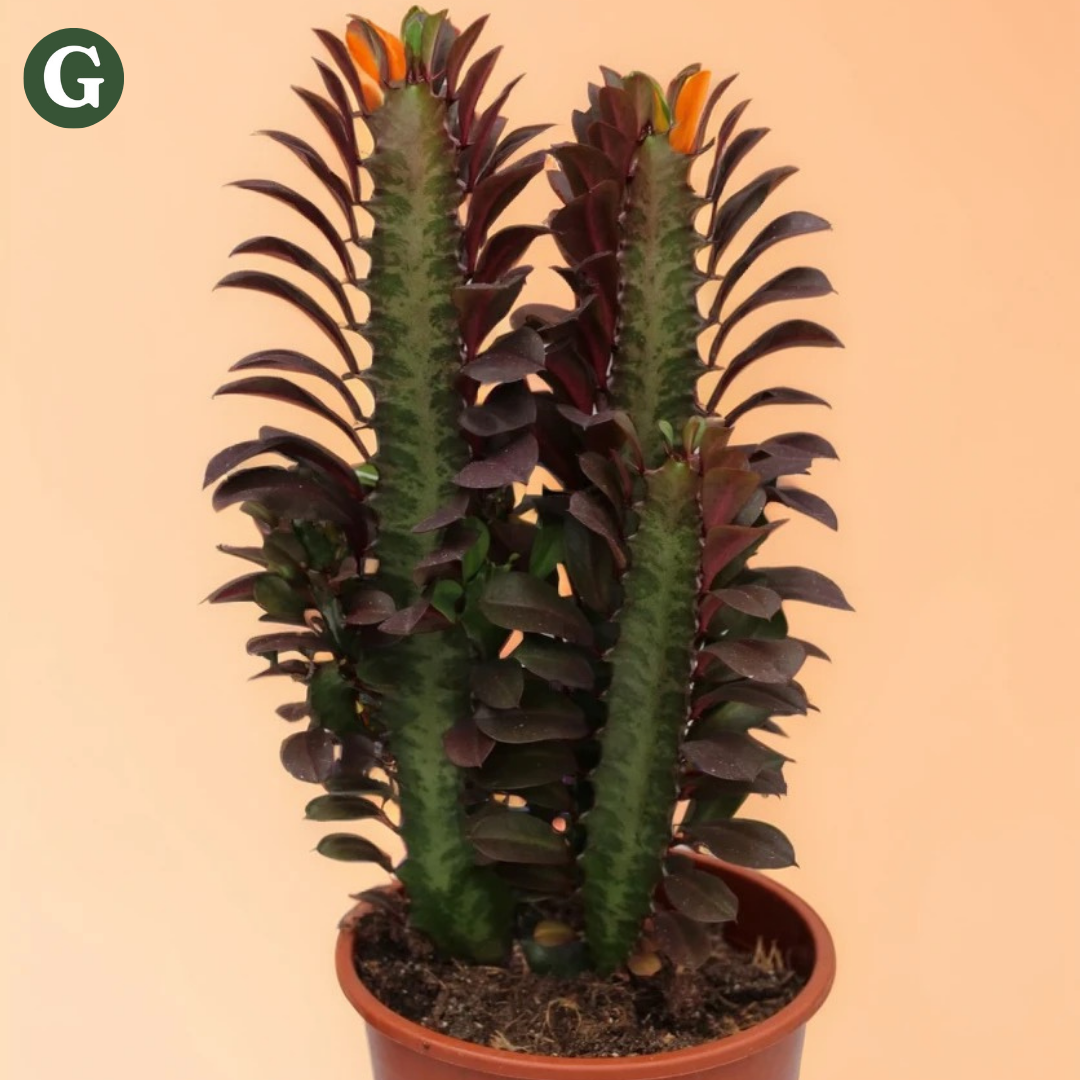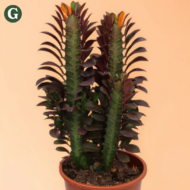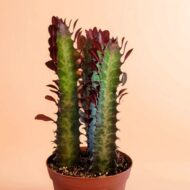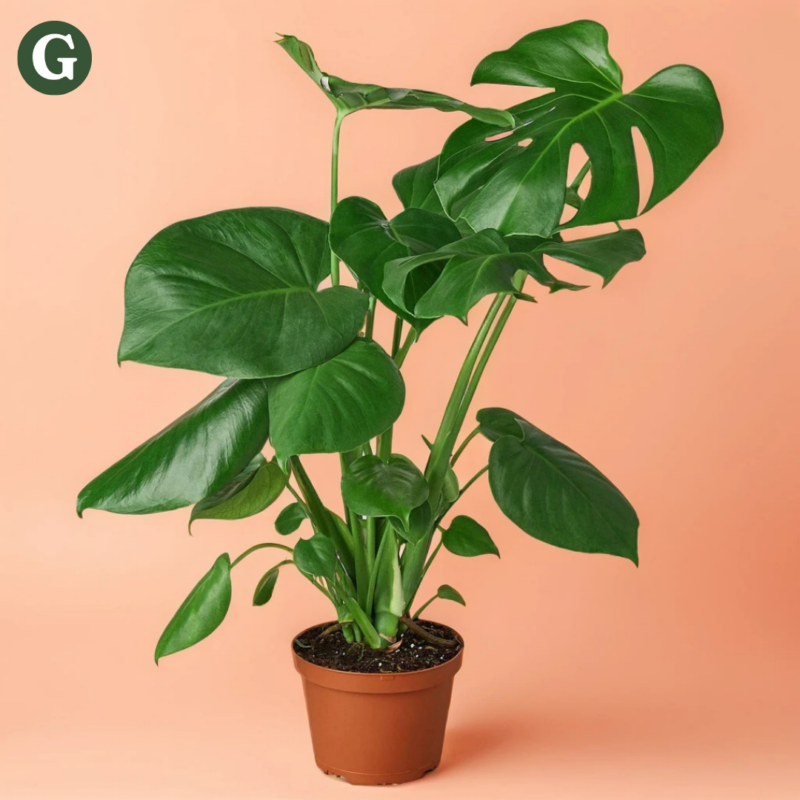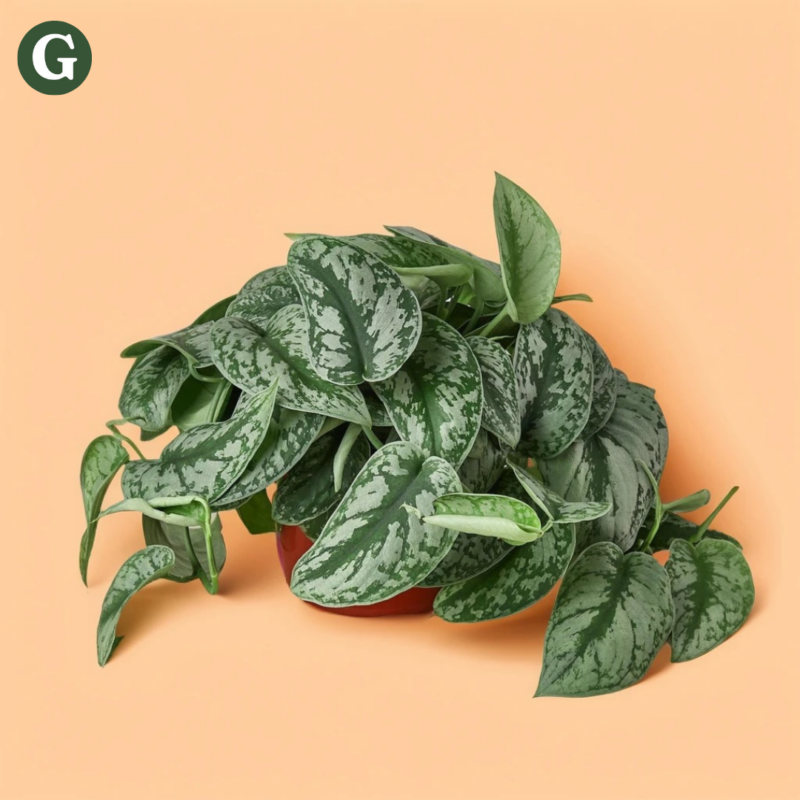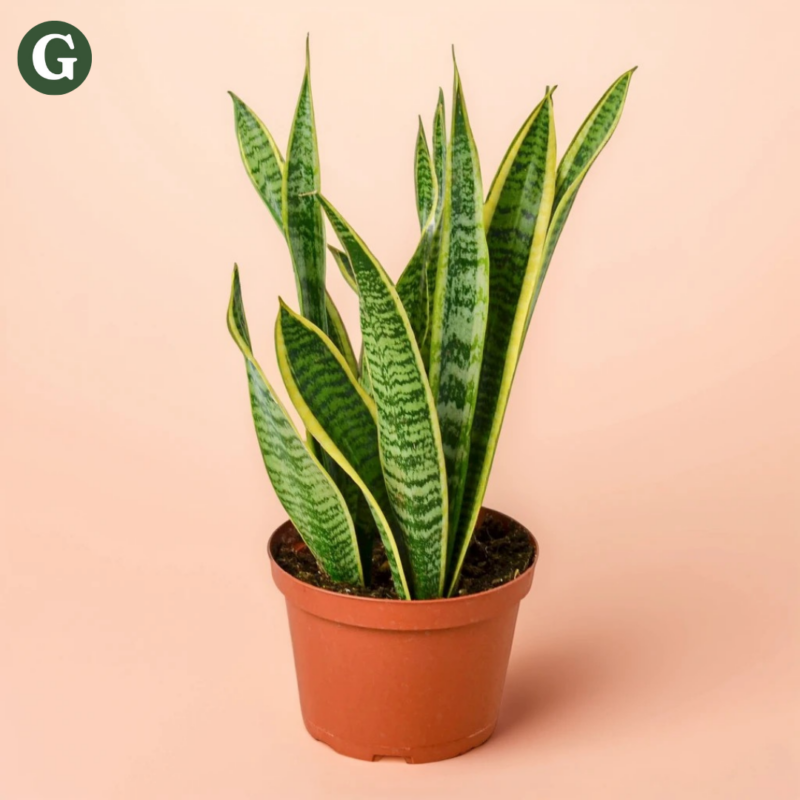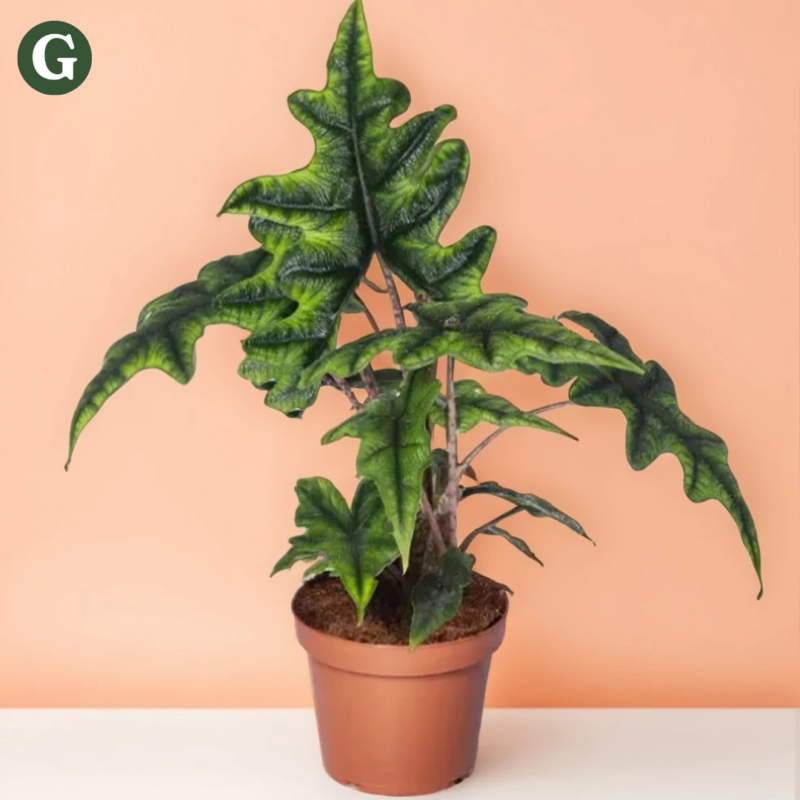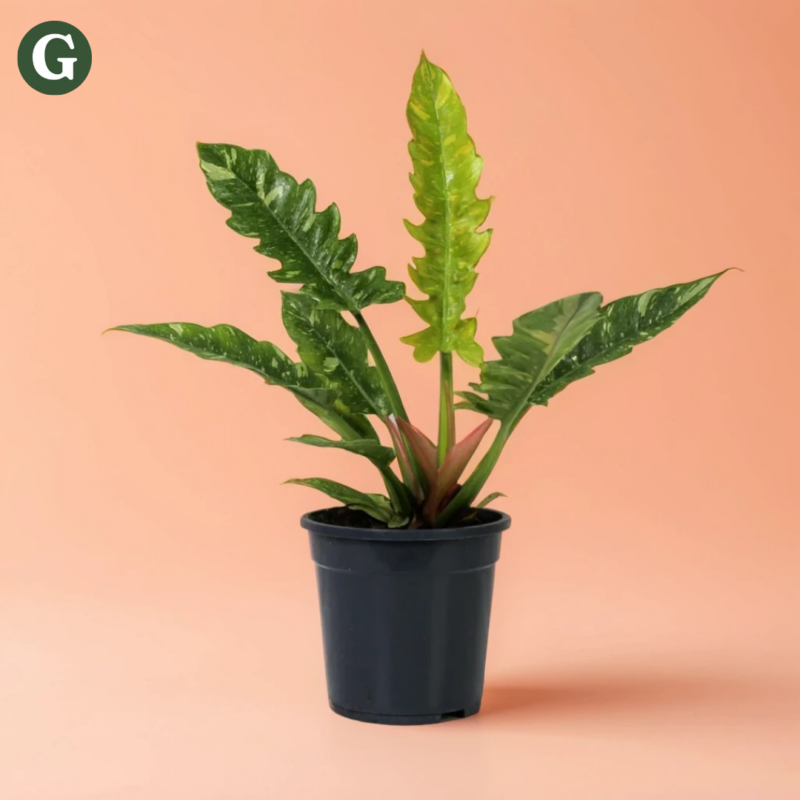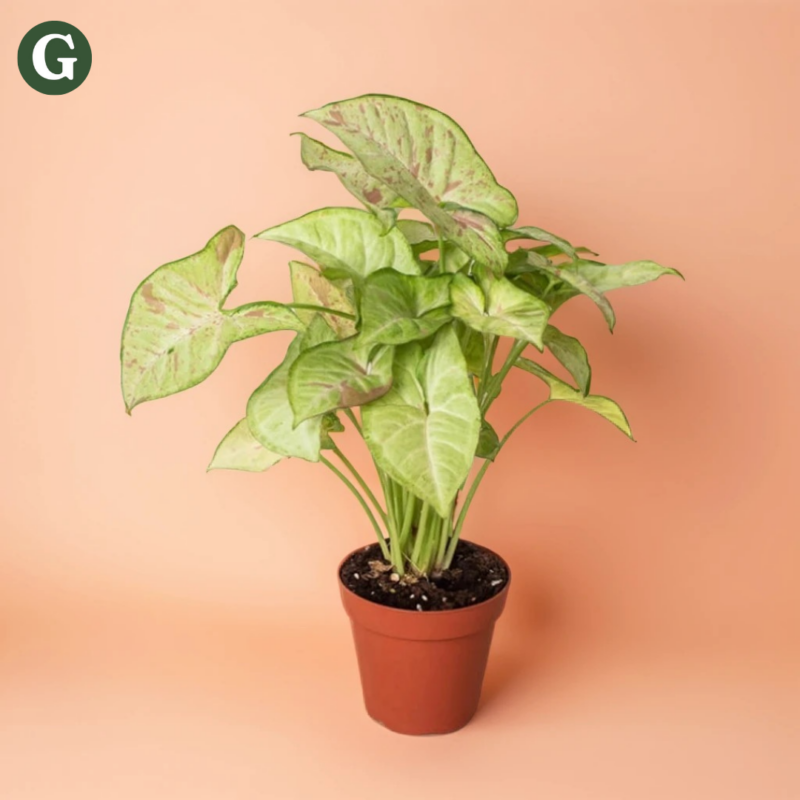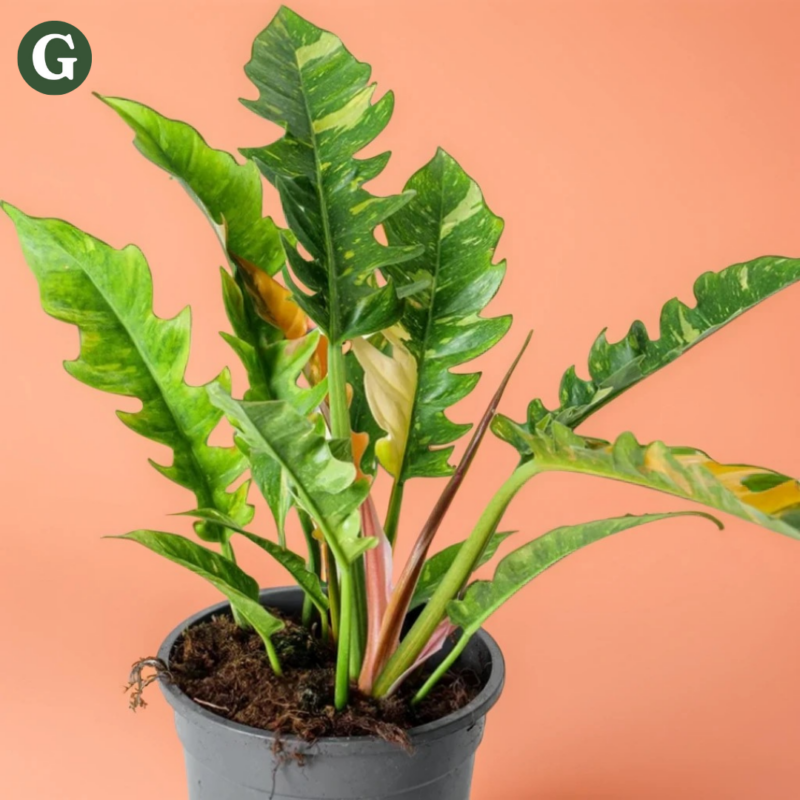Succulent Euphorbia Trigona Rubra
Botanical Name: Euphorbia trigona 'Rubra'
Common Name(s): Red Triangle Cactus, Ruby Red Euphorbia, African Milk Tree (Variegated Red)
The Euphorbia Trigona Rubra is a striking and unique succulent that is a cultivar of the Euphorbia trigona species, native to West Africa. This variety stands out due to its vibrant red stems, which give it the common name "Red Triangle Cactus." It has a distinctive triangular shape, with vertical ridges along the stems, resembling a pyramid or a tree-like structure. The stems of this plant are typically green when young but develop into deep red or maroon hues as they mature, often accentuated by a touch of purple. This colorful display makes it a captivating addition to succulent collections or as an ornamental feature in any space.
The plant's upright, spiny stems grow tall, usually reaching up to 6 feet (1.8 meters) in height, though it can be pruned to maintain a more compact form. The stems are covered in small, sharp spines that protrude from the ridges, adding to the plant's architectural appeal. In late spring or early summer, Euphorbia trigona 'Rubra' produces small, inconspicuous flowers that are typically yellowish-green and grow in clusters, though they are not the main attraction of the plant. Its striking stems and easy care make it a favorite for both beginner and seasoned succulent enthusiasts.
This Euphorbia trigona variety is a sun-loving succulent that thrives in bright, indirect light. While it can tolerate some direct sunlight, it prefers moderate exposure, especially in regions with intense summer heat, to prevent sunburn. When grown indoors, placing it near a south- or west-facing window is ideal to ensure it gets enough light to maintain its colorful appearance. It is highly drought-tolerant and does best with infrequent watering, allowing the soil to dry out completely between waterings. Overwatering can lead to root rot, so it's crucial to provide well-draining soil and use a pot with drainage holes.
As a succulent, this plant requires a soil mix that facilitates proper drainage. A cactus or succulent-specific mix works well, or you can amend regular potting soil with sand or perlite for added drainage. When growing this plant in a container, ensure it is in a pot with drainage holes to prevent excess moisture from sitting around the roots.
Note: Like other members of the Euphorbia family, this succulent produces a milky, latex-like sap when cut or damaged. This sap can be irritating to the skin and eyes, so it’s important to wear gloves and avoid contact with the sap. If you have pets or small children, it's best to place this plant in an area that is out of their reach.
Care Insights & Expert Tips
- Pruning when need: Pruning is generally not necessary unless you need to remove dead pads or control the size of the plant.
- Succulent/Cactus Mix: For this succulent, a well-draining succulent soil mix is preferred as this soil mimics a dry desert environment.
- Repot every 2-3 years: Repot every 2-3 years or when the plant becomes too large for its container.
- Handle with Care: This cactus is covered in spines that can cause painful injuries. Use thick gloves when handling them.
- Propagates easily: This cactus can be easily propagated by cutting off stem pads (cladodes) and allowing it to dry and callus for a few days before planting it in well-draining soil.

Visit our plant care library
Find essential tips to keep your plants thriving, vibrant, and healthy.
